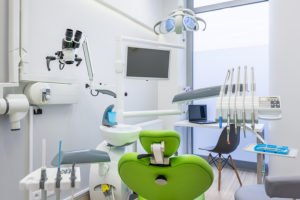What Defines Digital Dentistry?
 Computers have revolutionized just about every industry there is. Computers let you send emails instead of letters, order products online and have them delivered to your door, and create HD videos for an international audience. Now that 3D printing is taking off, computers are having a big impact on the field of dentistry. But what exactly is taking dentistry into the Digital Age?
Computers have revolutionized just about every industry there is. Computers let you send emails instead of letters, order products online and have them delivered to your door, and create HD videos for an international audience. Now that 3D printing is taking off, computers are having a big impact on the field of dentistry. But what exactly is taking dentistry into the Digital Age?
CAD/CAM
CAD/CAM stands for “computer-aided design and computer-aided manufacturing.” Not that long ago, a dentist would have had to make a cast of your tooth and then make a mold from that to create a replacement for a crown or a dental appliance. But the casting process is imperfect since the casting material can shrink or deform, and it’s important to be precise since your teeth fit very closely together.
CAD/CAM technology lets dentists scan your teeth and create a 3D model using imaging software. The dentist can then use the model to 3D print a mold, and that mold will create a replacement crown or denture that’s the exact same shape as the original.
Digital Radiography
Digital radiography is already a part of many dental offices. The difference between digital radiography and the regular kind is basically the same as the difference between digital photography and photos on film. Taking digital x-rays has several advantages: the dentist gets the images immediately instead of waiting for the film to develop, the image can capture fine details that the dentist can zoom in on, and digital x-rays need less radiation than the traditional film.
Shade Matching
For replacement crowns, dentures, onlays, and other dental procedures, it’s important to match the color of your natural teeth if you don’t want the replacements to stand out. And while every mouth is full of off-white teeth, there can be a surprising difference in shades between two different mouths. But by taking a digital photo and comparing colors in an editing program, a dentist can precisely match the color of a new crown to the color of your natural teeth.
Along with 3D models and photography, digital dentistry can also refer to things like computer-controlled surgical tools, digital record management, and the growing number of uses dentists are discovering for lasers. So while dentistry wasn’t the first industry to really benefit from computers, there are a growing number of ways that the digital revolution is changing the way dentists can care for your teeth.